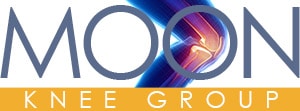Allografts Are Three Times More Likely to Retear
A torn ACL cannot be reliably sewn back together and heal. Instead, modern surgical practice is to replace it with a graft. That replacement graft either comes from your body (autograft) or a cadaver (allograft).
Research shows allografts (when the graft type comes from a cadaver rather than your body) are three times more likely to retear than autografts.
All Graft Types Provide the Same Functionality
Graft source does not make a difference in the functionality you can achieve with your reconstructed ACL. You can move the same regardless of graft type.
But the graft used for your ACL surgery does make a difference in your risk of suffering a retear: allografts are three times more likely to retear than autografts, according to the MOON Knee Group long-term study.
This difference in retear risk is most significant for competitive athletes under the age of 25. This is why surgeons no longer use allografts in young patients.
About Graft Retear Risk
Depending primarily on your age, where your replacement ligament comes from can significantly increase your chance of a retear. You can calculate your retear risk here.
The Retear Risk Gap Shrinks if You’re Over 25
Allografts fail three times as often across all age ranges, the research shows. However, the absolute difference in failure diminishes with age until it becomes insignificant.
It’s straightforward to recommend that every competitive athlete younger than their mid-twenties elect ACL reconstruction using autograft (with a replacement ligament from your body). For those 25 and over, allografts can be a viable option.
Note that people older than their mid-twenties suffer fewer ACL retears overall. Research so far does not provide any conclusive reason for this.
Why Choose an Allograft?
With an allograft, the replacement graft comes from a cadaver.
With autografts, the replacement ligament is “harvested” from your body: your patellar (knee), hamstring or quad (thigh) tendon. This means one more intrusion into your body to heal and strengthen. It also means a second surgical location, which can introduce infection or other issues.
Allograft avoids those complications. Your medical team may cite these or other reasons for you to consider an allograft.
Rehabilitation Can Reduce Retear Risk 40 to 60 Percent
Regardless of the type of graft used, you can reduce your risk of a repeat ACL tear by 40 to 60 percent by following MOON Knee evidence-based rehabilitation therapy coupled with a return-to-sport program.
All patients should participate in training programs before resuming normal activities or returning to sport.
Even after six to nine months of recovery, you may still have neuromuscular deficiencies that require fine-tuning.
Talk With Your Doctor
Calculate your expected failure based on the risk calculators and discuss with your doctor the advantages and disadvantages of each autograft type for you.
Share via:

